Jim Corbett National Park, nestled in the heart of the Himalayan foothills in Uttarakhand, India, is a treasure trove of biodiversity. It is not just a sanctuary for nature enthusiasts but also a paradise for wildlife enthusiasts. In this article, we will embark on a virtual safari to meet some of the incredible animals that call Jim Corbett National Park their home. Discover the diverse and mesmerizing world of animals in Jim Corbett National Park. From majestic Bengal tigers to exotic bird species, our park is home to a rich tapestry of wildlife. Explore the natural wonders of Corbett and witness these incredible creatures in their natural habitat. Plan your wildlife adventure today
Table of Contents
The Royal Bengal Tiger (Panthera Tigris Tigris)
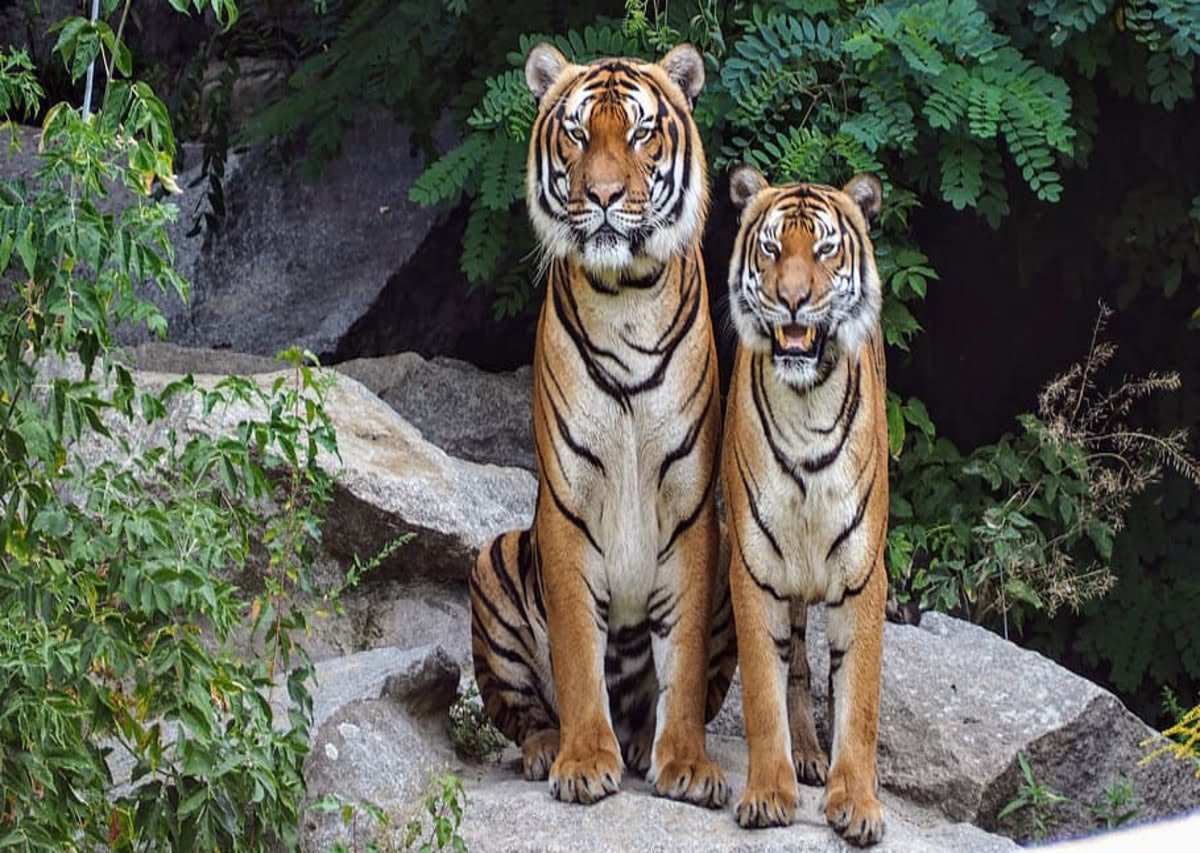
The Tiger not only holds the spotlight as the star attraction of Jim Corbett National Park but also stands as the most revered among India’s wild animals. This magnificent creation of nature symbolizes the force of the natural world and holds a significant role in our culture, mythology, and legends. Regarded with reverence, this majestic creature is treated and worshipped as the sovereign of the forest.
No visit to Jim Corbett National Park would be complete without encountering the majestic Royal Bengal Tiger. As the apex predator of the park, these tigers are known for their distinctive orange coat with black stripes. Jim Corbett is renowned for its successful tiger conservation efforts, making it one of the best places in India to spot these elusive big cats in their natural habitat.
The Asian Elephant (Elephas maximus)
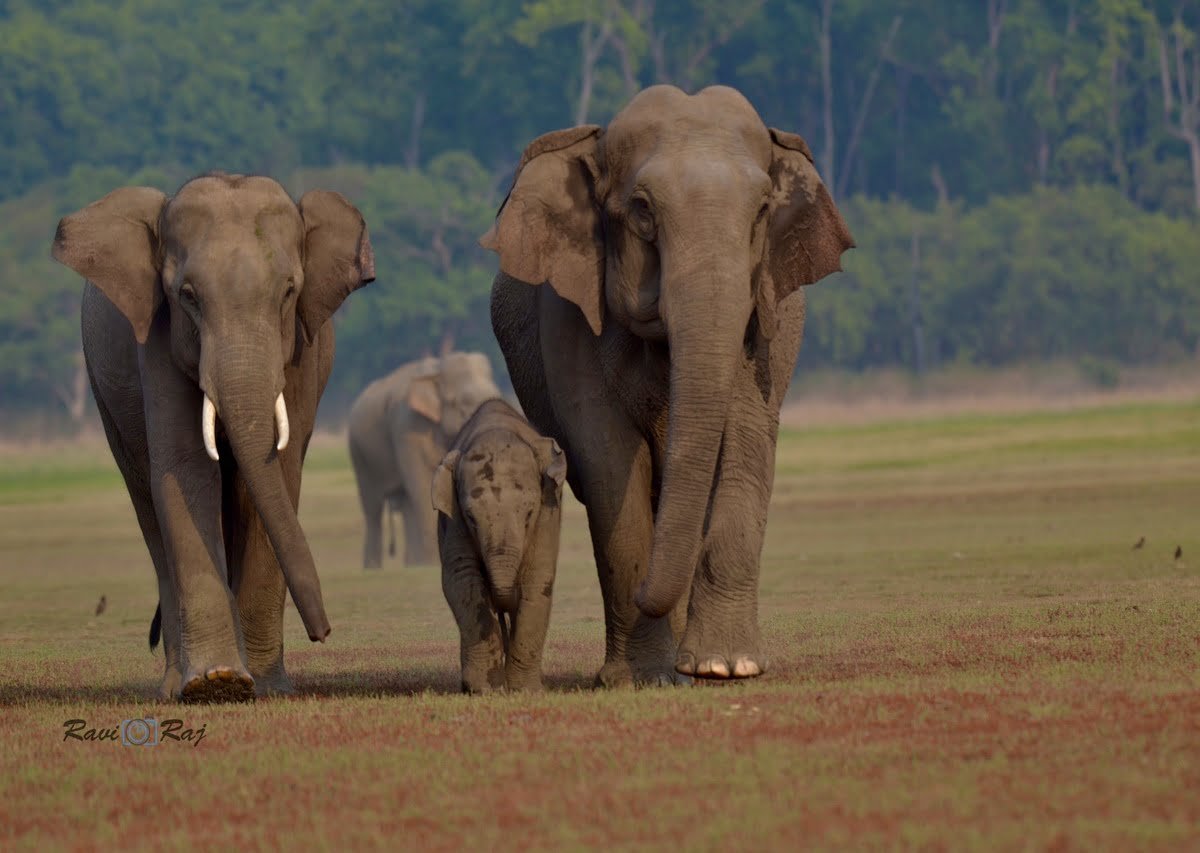
Besides the Royal Bengal Tiger, Corbett is also inhabited by a significant number of the endangered Asiatic elephant. The gentle giants of Jim Corbett, Asian elephants, are a common sight in the park. These magnificent creatures roam freely, often seen near water bodies where they cool off and engage in playful activities. Observing these intelligent animals in their natural environment is a heartwarming experience.
Elephants, renowned for their social nature, form groups primarily comprising females and their offspring, led by the eldest and most experienced female. Adult males typically journey alone, joining female herds solely for mating purposes. While elephants roam throughout Jim Corbett National Park, they are notably prevalent in Dhikala Chaur, Phulai Chaur, Bijrani, and the Jhirna zone of the reserve.
The Spotted Deer (Axis axis)
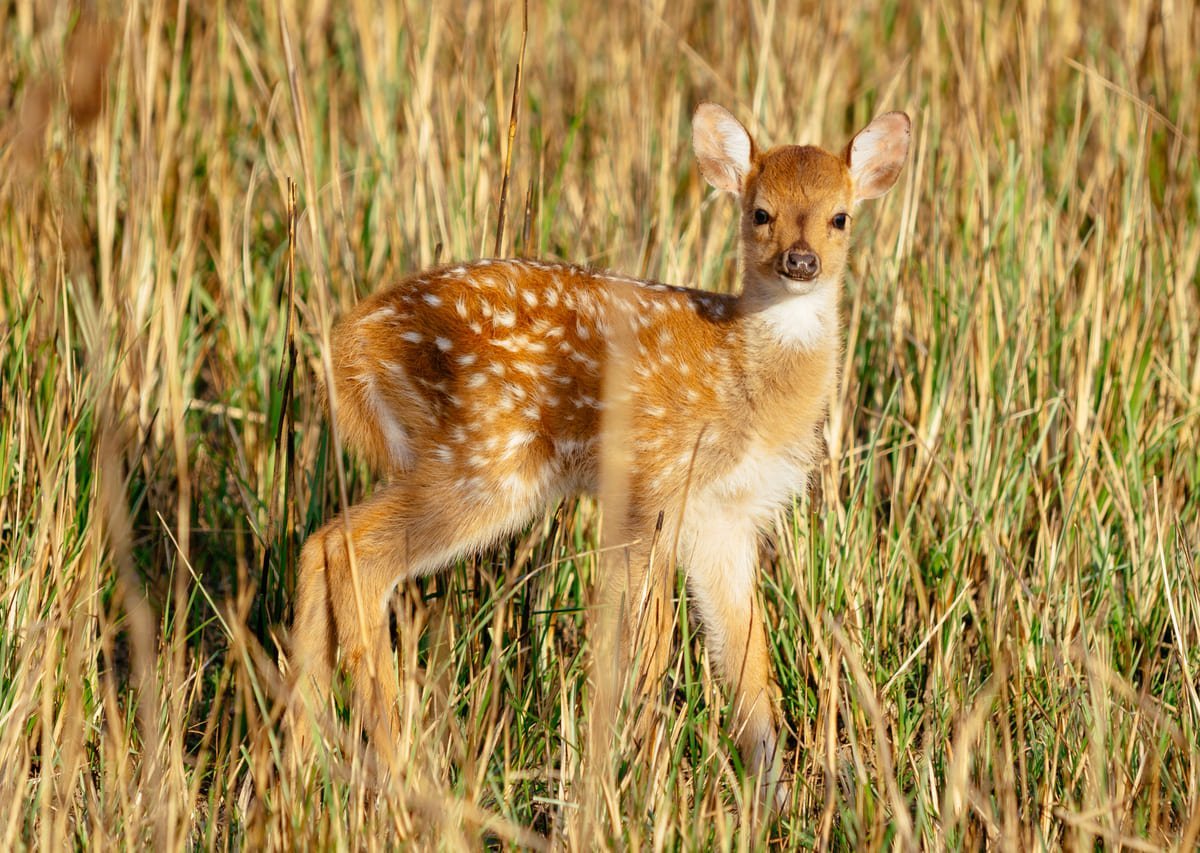
Spotted deer, also known as chital, are a ubiquitous sight in Jim Corbett National Park. Their unmistakable white spots against a rich reddish-brown coat render them easily identifiable. They graze in large herds, and their presence often attracts predators like tigers and leopards, offering a glimpse into the circle of life in the wild. Chital primarily rely on grasses as their main source of food, although they also supplement their diet with fallen fruits, flowers, and leaves from forested regions. They tend to favor grazing in open, short grasslands with minimal vegetation, allowing them to keep a vigilant eye out for predators such as tigers.
The Indian Sloth Bear (Melursus ursinus)
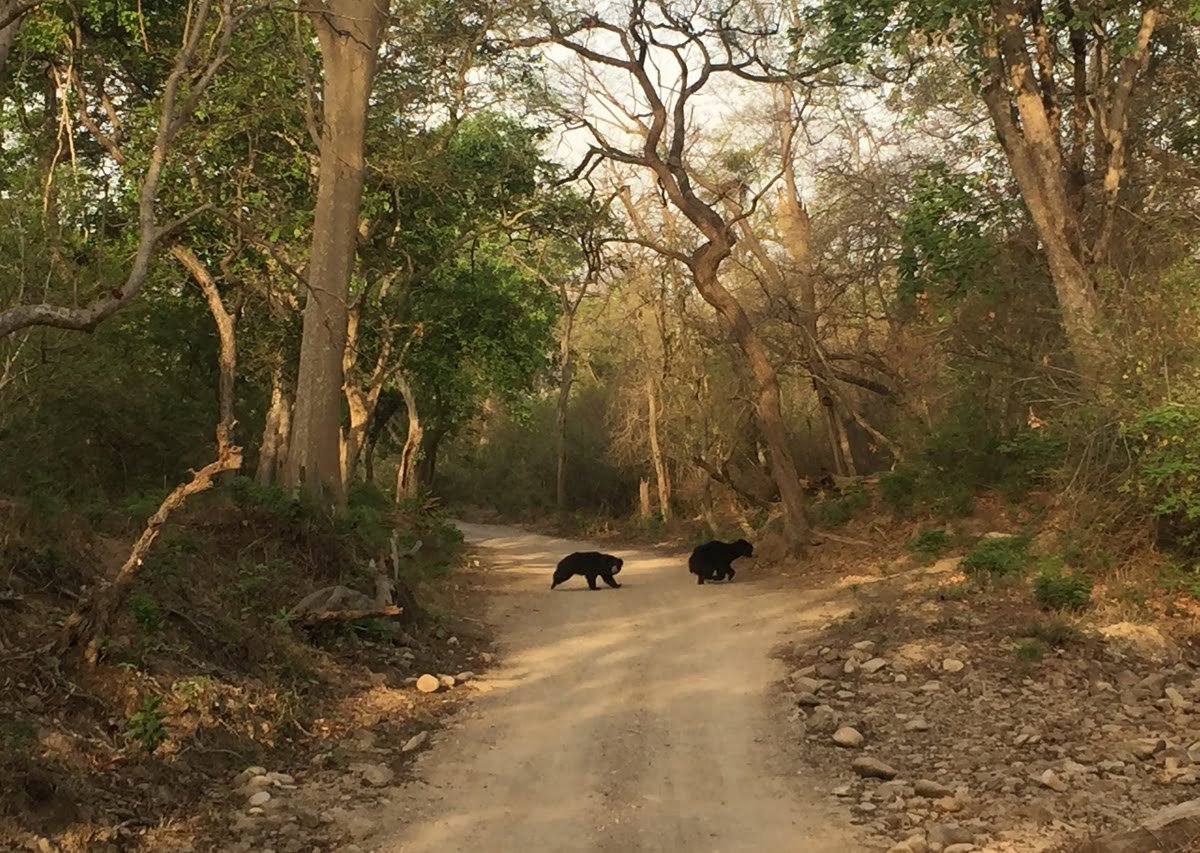
The Indian sloth bear is another intriguing resident of Jim Corbett National Park. The sloth bear, scientifically known as Melursus ursinus, is the most prevalent among the four bear species in India, and it is found in various regions across the country. These shaggy-coated bears are known for their unique appearance and distinctive shuffling gait. Spotting one of these bears foraging for termites or fruits is a memorable experience.
The Himalayan Goral (Naemorhedus goral)
A lesser-known but fascinating inhabitant of the park is the Himalayan Goral, a small herbivore often found on rocky slopes. Their distinctive curved horns and agile movements make them a joy to observe in their natural rocky habitat. The lifespan of the Himalayan goral is typically 14 or 15 years. The female undergoes a gestation period lasting 170–218 days, usually giving birth to a single offspring. These young gorals are weaned at 7 or 8 months of age and attain sexual maturity around 3 years old.
The Crocodile Species
Jim Corbett National Park is not just about land animals, it’s also home to several crocodile species. The marshy areas and rivers within the park provide a suitable habitat for crocodiles, including the mugger and gharial. These reptiles offer a unique opportunity for wildlife enthusiasts to witness their prehistoric grace.
The Vibrant Avian Life
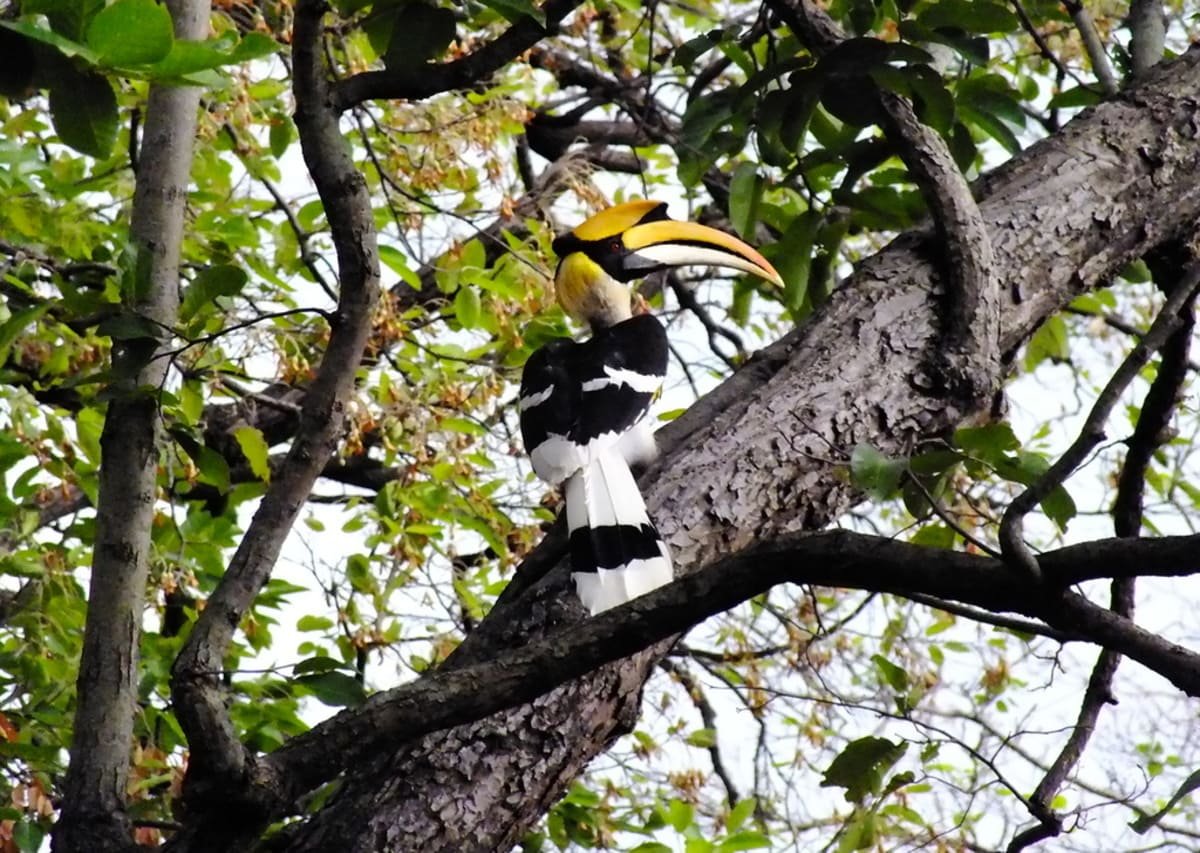
Apart from mammals and reptiles, Jim Corbett National Park boasts a rich avian population. Birdwatchers can delight in spotting numerous species, including the crested serpent eagle, great hornbill, kingfishers, and vibrant Indian pittas. The sanctuary is a haven for bird enthusiasts, offering an unparalleled paradise for avian admirers.
Jim Corbett National Park is a haven for wildlife enthusiasts, offering a chance to meet an astonishing variety of animals in their natural habitats. From the regal Bengal tiger to the gentle Asian elephant and the elusive Himalayan Ghoral, each encounter is a testament to the park’s commitment to preserving biodiversity.
Frequently Asked Questions (FAQs)
1. When is the best time to visit Jim Corbett National Park for animal sightings?
The best time to visit for animal sightings is from November to June when the weather is pleasant, and animals are more active.
2. How can I book a safari at Jim Corbett National Park?
Safaris can be booked through the official website or at the park’s gate. It’s highly recommended to make reservations well in advance, particularly when visiting during the bustling peak tourist season.
To book Safari Click here….
3. Are there accommodations available inside the park?
Yes, there are various resorts and forest lodges available within and around the park for a comfortable stay.
Read about Treehouse stay in Phato Zone…..
4. Can I take photographs during the safari?
Yes, photography is allowed during the safari. However, it’s essential to follow the park’s guidelines and maintain a safe distance from the animals.
5. What should I do in case I encounter a wild animal during the safari?
It’s crucial to remain calm and follow the instructions of your safari guide. Do not make sudden movements or loud noises, and keep a safe distance from the animal. Your safety is a top priority during the safari.